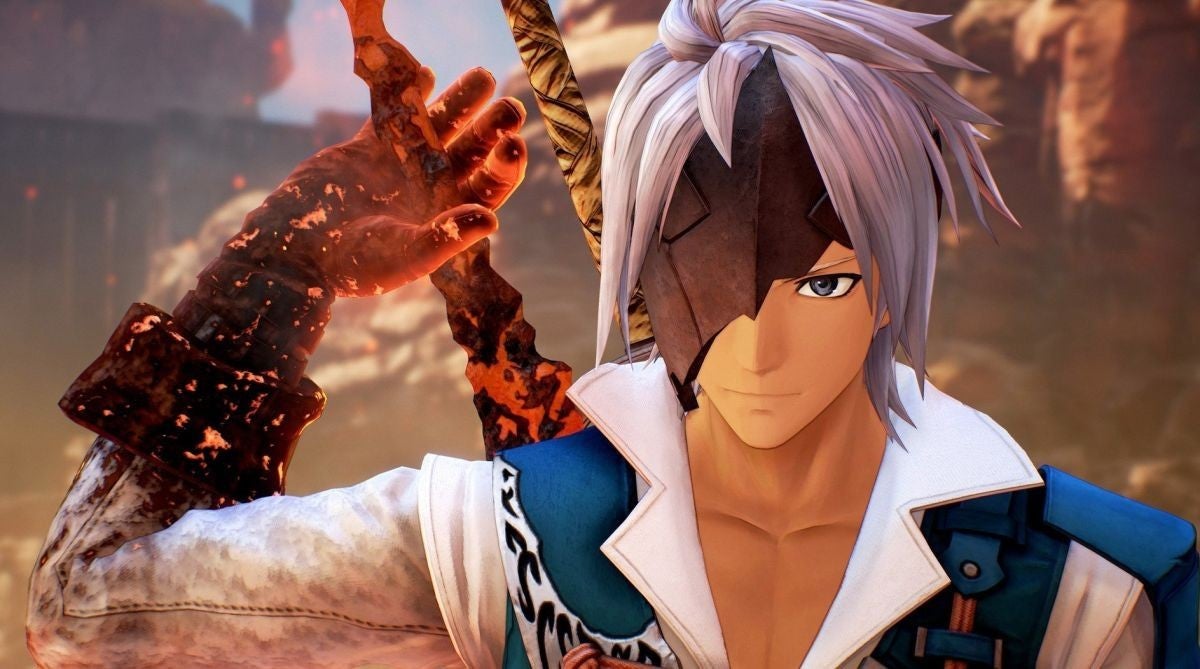Tales of Arise, the 17th entry in Bandai Namco‘s Tales of series of games, is a fun and furiously paced action-driven RPG that features a story that relies a bit too heavily on extreme and senseless actions of oppression and cruelty. The new game is the first Tales of game in nearly five years and aims to revitalize the franchise for a new generation of players and fans. While Tales of Arise retains the core identity of a fantasy-themed RPG with a heavy emphasis on storyline, character interactions, and combat against monsters, some of the more fiddly aspects of the combat system found in past Tales of games have been removed in favor of a more streamlined experience that emphasizes dodging and countering attacks as well as using a character’s unique attack styles to their maximum advantage.
Videos by ComicBook.com
Traditionally, the Tales of games focus heavily on story, perhaps more so than just about any other JRPG franchise. The games take place in epic worlds, usually involving equally epic stakes and some very deep and powerful themes. In this case, Tales of Arise is a tale of two worlds — Dahna and Rena. 300 years before the start of the game, the technologically superior Rena invaded Dahna, enslaving the indigenous people (who had what appeared to be a medieval-equivalent society prior to its destruction) and using the planet as the site of its Crown Contest, a competition to determine the next sovereign of Rena. The five lords competing in the Crown Contest each attempt to gather astral energy from the respective region they rule over, both by mining various types of resources and by siphoning astral energy from the Dahnan populace.

When the game kicks off, players control Iron Mask, a Dahnan slave who weirdly wears a full mask covering his face and is one of the few Dahnans without a stone embedded into their hand to siphon off astral energy as they toil away in the mines. Iron Mask and the other enslaved people of the opening region of Caliglia have it rough working to the point of exhaustion in a harsh arid environment, but Tales of Arise periodically raises the stakes with more acts of sadistic cruelty to the Dahnans. There are multiple cinematics in which Dahnas are murdered en masse, and honestly, you get to the point where entering a new realm comes with a sense of foreboding that you’re about to experience some sort of horrifying scene when you stroll into the main population center.
Luckily for Iron Mask (and honestly, all of Dahna), fate puts him in contact with Shionne, a Renan woman with a bizarre ability that causes thorns of dark astral energy to lash out whenever someone touches her. Shionne is seeking out the five Master Cores possessed by the five Renan Lords, and teams up with Iron Mask, who conveniently can’t feel any pain. Iron Mask and Shionne are later joined by other characters who have their own reasons for wanting to overthrow the status quo. We get to know all six characters through a plethora of both mandatory and optional cutscenes and scripts, which are honestly some of the highlights of the game. All six characters have a ton of depth and personality to them, and you genuinely grow to care about the characters over the course of the game. Of course, the relationship between Shionne and Alphen, the man behind the mask, is at the core of Tales of Arise, and you’d best be ready to watch a lot of awkward moments, heated arguments, and of course wistful glances between the two. As a sucker for a good romance, I appreciate that Tales of Arise really leaned into the Romeo and Juliet-esque relationship between the pair.
Combat in Tales of Arise uses a modified form of the series’ Linear Battle System that focuses on building combos of both basic and more powerful moves while trying to dodge an enemy’s attacks. A successful “perfect dodge” provides the opportunity for an immediate counterattack, and players can also use special Boost Attacks that have an additional effect on certain kinds of enemies. Eventually, players will have a window to land a Boost Strike, a powerful finishing blow that instantly KOs an enemy and often brings an end to the combat. Each character has their own style of fighting with their own mechanics, which helped keep combat from feeling too monotonous. There’s a rhythm to master with each character and type of monster, and trying to figure that out is both exhilarating and a bit exhausting. The healing system (which uses a pool of cure points that doesn’t replenish after combat) adds a secondary, delicate balancing act to most long dungeons as well, as a tough enemy could drain your pool of healing and prevent you from using those spells in future battles.

The boss fights in Tales of Arise are exhilarating and close affairs that left me on the edge of my seat. My complaints with the combat system are mostly minor; I wish there were an easier way of switching which character you control in combat — players need to hit the pause button and then tap on a bumper to switch — and it was sometimes frustrating to have your character heal only to immediately get wiped out again when a boss unleashes some sort of nigh-unavoidable attack seconds later. The AI characters also have access to their full range of abilities while the player-controlled characters can only use a few pre-selected moves while in the heat of combat, which feels like a missed opportunity.
Secondary systems in Tales of Arise include an intriguing character customization system that uses Skill Trees and “titles” to add new abilities, attacks, and buffs to a character’s repertoire. The game also features a fishing system, a husbandry system, a cooking system that provides players with temporary buffs, and tons of sidequests that reward a mix of gold, items, and skill points. One key to Tales of Arise is to complete the sidequests whenever possible as they often unlock new titles for your characters that give them more upgrades.
One of the core themes of Tales of Arise, namely that the shackles of the societal hierarchy have caused a lot of pain to both the Renans and the Dahnans, was something I struggled with. I found that the well-meaning message fell flat given that half the core cast were literally slaves at one point in their lives. While all six core characters of Tales of Arise come with a lot of baggage, it feels weird to compare members of the oppressing class to people who have literally watched their loved ones murdered in front of them, sometimes in brutal and despicable form. To Tales of Arise‘s credit, the game doesn’t try to portray the rage, despair, and fury of the Dahnans as invalid, but some of the more optimistic themes of the game didn’t jive with the horror we see the Dahnans go through during the course of the game. Let’s just say that the characters of Tales of Arise are a lot more enlightened than the average person, especially when choosing to move past hundreds of years of literal enslavement and the near-total erasure of their culture and society. Honestly, if I were faced with a fraction of what these characters went through, I probably would be in catatonic shock instead of collecting potatoes and tofu to make a delicious curry.
Tales of Arise is a fun game, but one with a bit of tonal disparity to it. One moment, you’ll be searching for owls wearing goofy accessories on behalf of the owl king, and then next you’ll watch in horror as a town of people is literally liquified before your eyes. As long as you try not to think too much about the stifling and nearly overwhelming amount of horror the characters have been put through, you’ll likely feel like you got your money’s worth of this very long and winding game. Even with some of its over-the-top plot points, this is definitely one of the better games I’ve played in 2021 and should be enjoyed by both newcomers to the franchise and veterans alike.
Rating: 4 out of 5
Tales of Arise is set to release for PlayStation 4, PlayStation 5, Xbox One, Xbox Series X|S, and PC via Steam on September 10th. A digital code was provided by the publisher for the purpose of this review, and it was reviewed on PlayStation 5.








